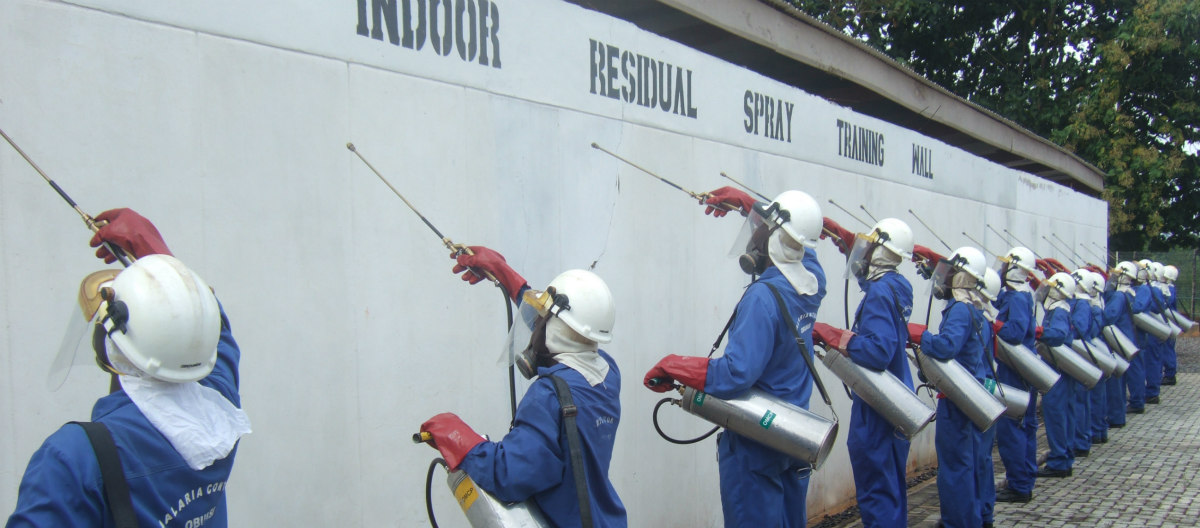Indoor Residual Spraying (IRS) in Ghana

Many mosquitoes that transmit malaria prefer to bite indoors or to rest indoors before or after a blood meal. Indoor residual spraying (IRS) involves coating of walls and other surfaces of a house with a long-lasting, residual insecticide. For several months, the insecticide will kill mosquitoes and other insects that come in contact with these surfaces. IRS does not directly prevent people from being bitten by mosquitoes. Rather, it usually kills mosquitoes after they have fed if they come to rest on the sprayed surface. Over time, this results in a progressive decline in mosquito density and longevity, especially among older female mosquitoes, thereby contributing to a reduction in malaria transmission.
As part of its corporate social responsibility project, AngloGold Ashanti, with the support of the NMCP, started spraying all structures where employees are residing as well as Obuasi town and the surrounding villages within the Obuasi municipality in 2006. The program engaged targeted communities through an intensive information, education and communication campaign on malaria and prevention, using media advertisements, talk shows (especially on FM radio), community committees, home visits and public banners, among others. This strategy helped create community acceptance of the IRS strategy in the Obuasi municipality, towns and surrounding communities. As a result, around 36,000 households were sprayed in this first IRS round, corresponding to a 96% coverage rate of targeted structures.
Because of the enormous success of the program, AngloGold Ashanti put a proposal through to the Global Fund for additional funding to scale up its malaria activities to other parts of the country. Under the Global Fund project, AGAMal implemented IRS in 25 districts, notably in Upper East and Upper West region in addition to selected districts in Northern Western, Central and Ashanti regions. The presence of the program in the six regions brought the total beneficiary population of the project to 2.6 million. Comprehensive education and advocacy efforts resulted in a high IRS acceptance rate; while WHO recommends a coverage rate of at least 85% of all structures, AGAMal was able to achieve around 95%. The biggest impact could be achieved in Upper East region where malaria prevalence in children under five could be reduced from 44% (DHS 2008) to 11.7% (DHS 2014). AGAMal received several consecutive A-ratings from the Global Fund for effective grant management.
Currently, IRS is being implemented in Ghana mainly by AGAMal and PMI. There are discussions to apply the “Obuasi Model” at other sites and assist other companies operating in Ghana. Already, companies such as Newmont and Tarkwa Goldfields have benefited from the program. At present AGAMal covers 14 districts, including Obuasi, all ten districts in Upper West Region and three districts un Upper East Region. AGAMal has over the years employed rotation of available insecticides with a the view to pre-emptively implement an effective insecticide resistance management strategy against malaria vectors. While IRS used to be implemented twice a year, a longer lasting insecticide now allows a similar protective impact with one single spraying cycle carried out between April and June each year, thus reducing cost significantly.
Further reading:
